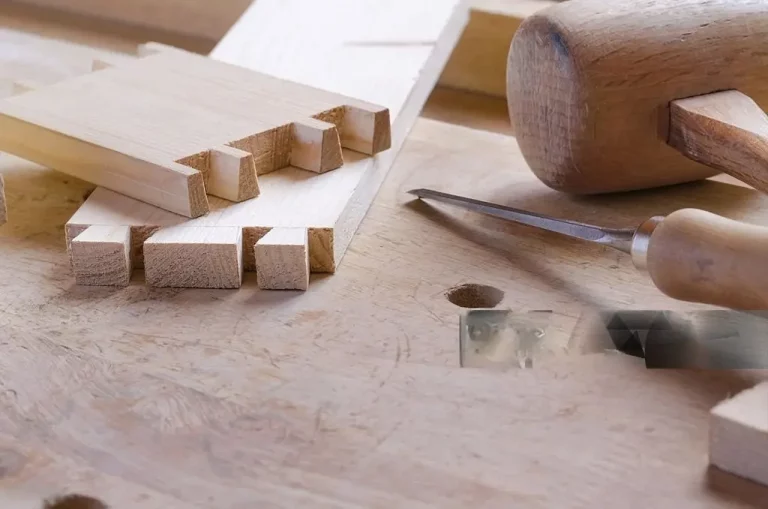A Comprehensive Guide to Dovetail Joints - Types, Tools, and Techniques

A dovetail joint is a woodworking joinery technique commonly used in furniture and cabinet making. It is known for its strength and durability, making it a popular choice for joining two pieces of wood at a corner without the need for mechanical fasteners like screws or nails. The joint consists of a series of pins and tails with a trapezoidal shape that interlock when fitted together. This type of joint is resistant to being pulled apart and is often used to join the sides of drawers to the front.
Types of Dovetail Joints
The different types of dovetail joints include Through Dovetail, Half-blind Dovetail, Secret Mitered Dovetail, Sliding Dovetail, and Full-blind Dovetail. Each type of dovetail joint serves specific functions and offers unique design possibilities in woodworking projects. Now, let’s delve into the details of each type of dovetail joint to understand their construction and uses in woodworking.
Through Dovetail
The Through Dovetail joint is a basic method where two pieces of wood are joined together at their ends with a finger-like interlocking method visible from all outside surfaces. This joint is commonly used for joining the corners of frames, boxes, cabinets, and other items.
Half-blind Dovetail
The Half-blind Dovetail joint allows the woodworker to hide the joint from the front end. The tails are housed in sockets in the ends of the board that is to be the front of the item, concealing their ends from view. This type of dovetail joint is often used to fasten drawer fronts to drawer sides, providing an alternative to attaching false fronts to drawers constructed using through dovetails.
Secret Mitered Dovetail
The Secret Mitered Dovetail joint, also known as a mitered blind dovetail, is used in high-class cabinet and box work. It offers the strength of a dovetail joint while being completely hidden from both the inside and outside corners by forming a mitered corner. This joint is similar in design to the mitered corner dovetail, which has just a single dovetail and is commonly used for picture frames and similar joins.
Sliding Dovetail
The Sliding Dovetail joint is a method of joining two boards at right angles, where the intersection occurs within the field of one of the boards that is not at the end. This joint provides the interlocking strength of a dovetail by sliding the tail into the socket. Crafters often slightly taper the socket to make it tighter towards the rear of the joint, allowing for easier assembly while ensuring a tight joint once in the finished position.
Full-blind Dovetail
The Full-blind Dovetail joint is designed to hide the dovetail’s outward appearance completely. This joint type is more complex and requires using two wooden pieces of equal thickness to create a joint where the dovetails are entirely concealed.
Essential tools
To make a dovetail joint, you will need several woodworking hand tools. The essential tools include a dovetail saw, a crosscut saw, a coping saw, wood chisels, a marking gauge, a combination square, a bevel square, a pair of dividers, a marking knife, a joiner’s mallet, and a pencil. Additionally, specialized tools like a brass wheel marking gauge, dividers, and a fine tip pencil can be used to enhance precision and efficiency in creating dovetail joints.
Common Types of Wood Used for Dovetail Joints
Common types of wood used for dovetail joints include poplar, white oak, and pine. Poplar is often recommended for learning dovetails due to its balance between affordability and quality, making it suitable for drawer sides and backs. White oak is another popular choice known for providing quality results in woodworking projects. Softwoods like pine are also used, although they are less forgiving but can be suitable for practice before working with hardwoods. Ultimately, the choice of wood for dovetail joints depends on factors like cost, availability, and the intended use of the finished piece.
Choosing The Size of Dovetails
When choosing the size of dovetails, several factors come into play to ensure a successful woodworking project. The size and spacing of dovetails are primarily dictated by the size of the stock being used for the project. Additionally, the angle of the dovetail is crucial, with angles between 7° and 15° generally recommended for optimal strength and aesthetics, regardless of the wood type being used. It’s important to strike a balance between the size of the pins and tails to create a mechanically strong joint while maintaining an appealing handmade look.
Moreover, considering the thickness of the stock is essential, especially for thinner pieces where using at least a 10° angle can increase glue surface and joint strength. Ultimately, the key factors to consider when choosing the size of dovetails include stock size, dovetail angle, balance between strength and aesthetics, and the thickness of the wood being used.
Conclusion
Mastering the art of dovetail joints opens up a world of possibilities in woodworking, combining strength, durability, and aesthetic appeal in every project. Understanding the various types of dovetail joints, selecting the right tools, choosing suitable wood types, and considering key factors like size and angle all contribute to creating impeccable joinery. Whether you’re a novice woodworker learning the basics or an experienced craftsman honing your skills, the precision and craftsmanship of dovetail joints elevate your woodworking to new heights. Embrace the challenge, practice diligently, and let the beauty and functionality of dovetail joints enhance your woodworking creations for years to come.